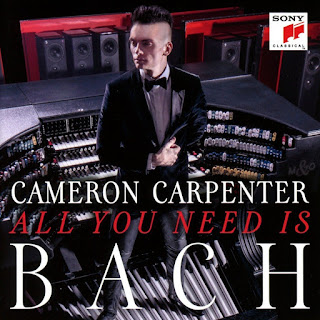Under Demenga’s bow, Bach’s Suite No. 1 for Solo Cello in G Major
flickers with candlelit intimacy, honed like the wood from the
instrument through which it emotes in that distinct and mineral tone.
One imagines the room where it was first practiced, walls dancing in a
quiet play of light and shadow: the player’s arched head, swinging
hands, lithe fingers curling about the neck of the one who sings. As to
the later suites, Demenga brings a unique mix of fluidity and rusticity
to his sound, but above all pays attention to negative spaces in a way
that any accomplished Bach interpreter must. We hear this in the pauses
of the Courante and in the substantial attentions of the Sarabande,
which he suffuses with a downright soulful air. And through the subtle
dramatic shape he imparts to the Menuets he dances his way to a
reflective brilliance in the Gigue.
With this perfect tetrahedron so thoughtfully folded before us,
Veress’s 1935 Sonata for Violin may seem to break the symmetry. Yet the
sonata, among Veress’s first published works, more importantly reveals
an economy of notecraft on par with the Baroque master. Its
slow-fast-slow structure betrays a more complex and organic geometry
that begins with a jig of Bartókian proportions and seeps through the
Adagio’s quicksand, only to rise again, grabbing the tail of gorgeous
gypsy air into the fresh air of the final leap. Violinist Hansheinz
Schneeberger, who made his ECM debut with Demenga on the latter’s first
Bach pairing, plays this jewel with an intensity and focus familiar to anyone who enjoys Kim Kashkashian’s take on solo Hindemith.
Despite the meager comparisons I’ve attempted to draw to other such
composers, this music thrives with a forward-looking robustness all its
own.
The light at the end of this tunnel comes in the form of Veress’s
Sonata for Cello. Composed in Baltimore, the 1967 piece also takes a
three-movement structure, this time marked “Dialogue,” “Monologue,” and “Epilogue,” which, as Holliger notes in an accompanying essay, takes us
through an inner turmoil on the path toward self-liberation. For me, the
most solitary movement is the Dialogue. Its dirge-like density betrays
an ecstatic turmoil while keeping a hand cupped to the ear of some
cherished and unrecoverable stillness. By contrast, the Monologue seems
almost resolute as it traces fingers blindly through the ashes, from
which the final movement rises in its own agitated way with assertion on
the tongue. As a student of Veress, Holliger no doubt took on some of
his mentor’s quirks, and the influence of said Epilogue rings clearly in
Trema.
Violist Tabea Zimmermann joins the roster for the Trio for Violin,
Viola and Cello, backing us into 1954. The 20-minute piece takes two
movements, the first of which moves like molasses into a dulcet and
spectral territory ahead of its time, while the second brings the patter
of urgency to a journey of immense detail and brilliance.
Of this journey the lowly reviewer can make no definitive claims.
Naysayers of the modern may make a delightful discovery or two along the
way, even as they cling to Bach, while defenders of the twentieth
century will immediately recognize that its music would be nowhere
without him. Either way, I can only commend Demenga and ECM for an
ongoing commitment to bring their programming alive with the benefits of
(im)possibility. (ECM Reviews)


































